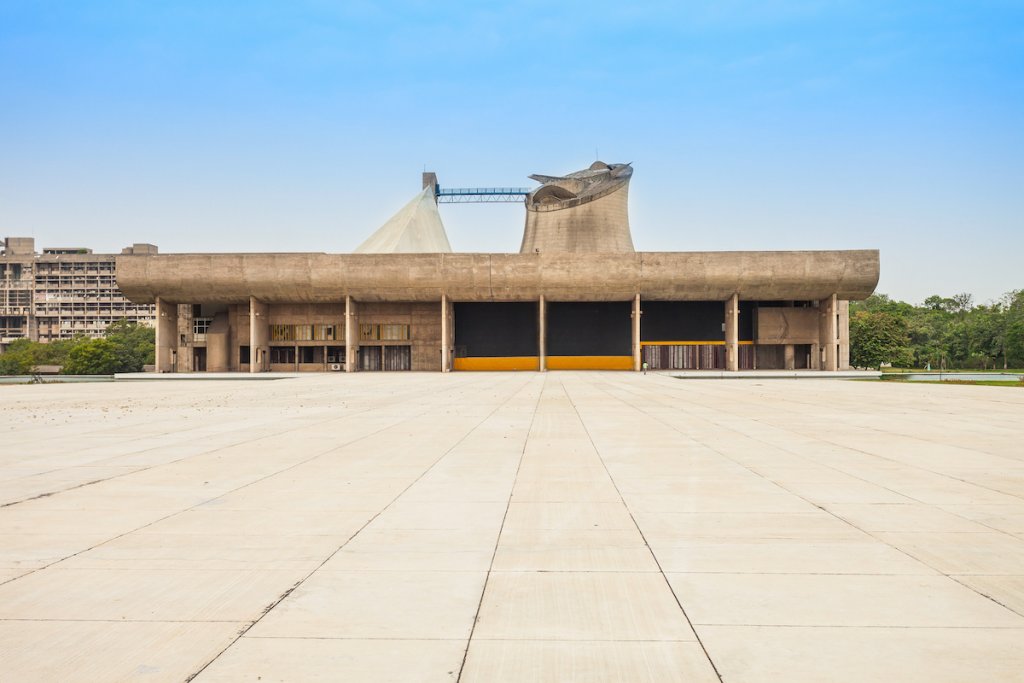Planopedia
Clear, accessible definitions for common urban planning terms.
What Is the City of Tomorrow?
The City of Tomorrow is the English name given to an early work of urban design by Le Corbusier, who, throughout his career, evolved a concept of city planning firmly based in rationality and order.

Titled Urbanisme in French and translated into English as The City of Tomorrow, French-Swiss architect Le Corbusier’s 1929 book launched a concept that continued to evolve throughout the architect’s career. Hailed as “a work of vision” at the time, the book laid out a plan for a city designed for maximum efficiency from the ground up. More recently, the proposal has been criticized for its failure to account for human needs, its insensitivity to the prospect of relocation, and its reliance on rationality that ignores the unpredictability of human behavior.
Warning of an impending crisis brought on by overpopulation and unsustainable urban density, Le Corbusier created his city plan as a response to what he saw as a growing crisis. Le Corbusier saw cities in his day as messy, disorganized, and inefficient, writing that “the whole urban scene is one of wasted opportunities and inefficiency,” seeing this wastefulness in traditional European cities, with their winding, narrow medieval streets, inadequate infrastructure, and inefficient transportation networks.
In stark contrast to a people-centric thinker like Jane Jacobs, Le Corbusier views the city as a machine to be redesigned and reordered for maximum efficiency, writing emotionlessly about wholesale displacement of people and razing of neighborhoods. The City of Tomorrow doesn’t place much value on street-level social encounters, mixed use, or other elements of urbanism championed by Jacobs and others. In Le Corbusier’s view, a building should function like a machine, built functionally and economically without flourishes. He advocated for mass production and believed cities could be optimally designed based on mathematical principles.
Through order and uniformity, Le Corbusier believed a city can provide better quality of life for everyone—a quality of life narrowly defined by his own values, which eschew anything decorative or frivolous. His designs display a geometric austerity evocative of later mid-century Brutalism.
Le Corbusier’s first iteration of an ideal city, which would be built from the ground up, would include a central business district with 24 evenly spaced glass skyscrapers surrounded by green space, with the goal of having high density while maintaining a high percentage of open space. The skyscrapers are connected by a subway system, part of a multi-layered transportation system with grade separations for different modes. Lower-rise residential buildings would surround the central district.
To get more support for his concept and provide a real-life example, Le Corbusier suggested a redesign of central Paris, known as the Plan Voisin, that would include the demolition of thousands of buildings and the wholesale (and, presumably, forcible) relocation of current residents to the outskirts of the city. In subsequent years, Le Corbusier continued to refine his doctrine, publishing The Radiant City in 1933.

While none of Le Corbusier’s urban visions were ever fully realized (the Indian city of Chandigarh arguably coming closest), his emphasis on highly ordered buildings and intermittent green space proved influential as a model for public housing and other developments around the world, such as Chicago’s Cabrini Green and Park La Brea in Los Angeles, with his ‘Towers in the Park’ design. Le Corbusier’s ideas were also highly influential in Walt Disney’s later foray into urban design, the Experimental Prototype Community of Tomorrow, or EPCOT, where Disney adopted Le Corbusier’s values of order and efficiency, envisioning EPCOT as a community with strict design standards that would use cutting-edge technology and rational planning to make human life better—in a narrowly prescribed way.



